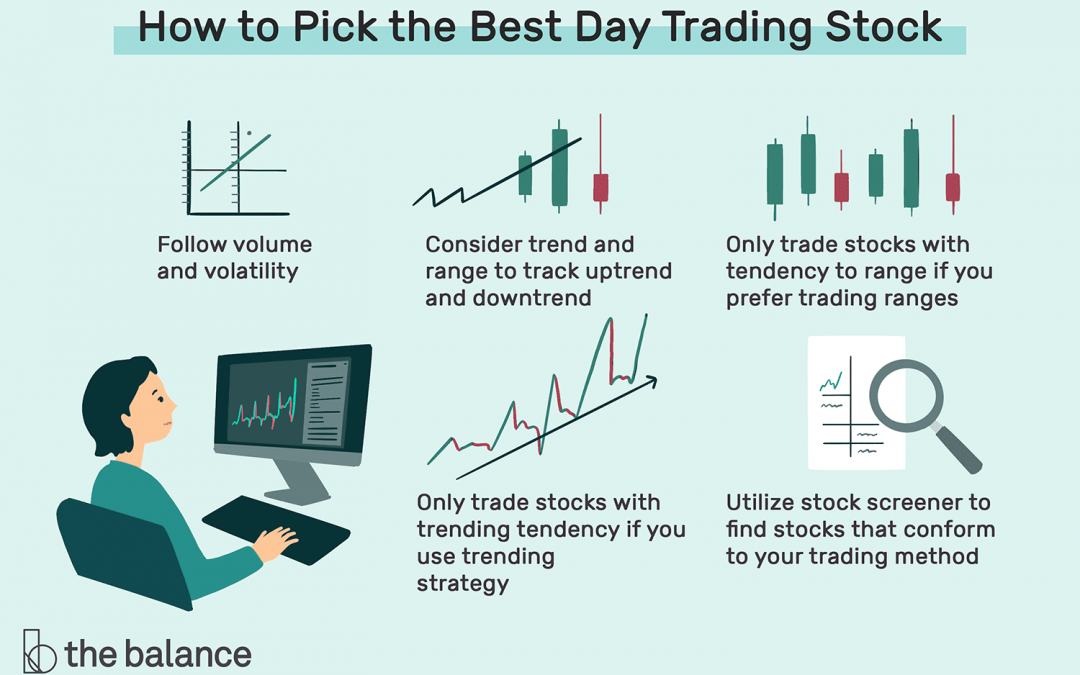Picking the best day trading stocks requires careful analysis and consideration of several factors to identify opportunities with the highest probability of success. Here’s a detailed guide on how to pick the best day trading stocks:
Volatility and Liquidity:
Volatility: Day traders typically look for stocks with high volatility, as volatile stocks tend to exhibit larger price movements within a single trading session, providing opportunities for profit. Stocks with low volatility may not offer sufficient price movement to generate significant trading opportunities.
Average True Range (ATR): The ATR indicator measures the average range of price movements in a stock over a specified period. Day traders often use ATR to gauge a stock’s volatility and identify potential candidates for day trading.
Volume and Liquidity:
Trading Volume: Liquidity is crucial for day trading, as it allows traders to enter and exit positions quickly and at competitive prices. Day traders typically focus on stocks with high trading volume, as they offer ample liquidity and tighter bid-ask spreads, reducing the risk of slippage.
Average Daily Volume (ADV): Day traders look for stocks with above-average trading volume relative to their average daily volume. Stocks with higher ADV tend to have more active participation from traders and investors, making them suitable for day trading.
Price Range and Spread:
Price Range: Day traders often prefer stocks with a moderate to high price range, as they offer greater profit potential within a single trading session. Stocks with low price ranges may not provide sufficient price movement to generate meaningful profits for day traders.
Bid-Ask Spread: The bid-ask spread represents the difference between the highest price a buyer is willing to pay (bid) and the lowest price a seller is willing to accept (ask). Day traders look for stocks with narrow bid-ask spreads, as tighter spreads reduce trading costs and improve profitability.
News Catalysts and Events:
Market News: Day traders monitor market news, economic releases, corporate earnings reports, and other events that can impact stock prices. Stocks with significant news catalysts or developments may experience heightened volatility and offer trading opportunities for day traders.
Earnings Announcements: Earnings season can present lucrative opportunities for day traders, as stocks often experience sharp price movements in response to earnings reports. Day traders may trade earnings gaps, breakouts, or reversals based on the market’s reaction to earnings news.
Technical Analysis:
Chart Patterns: Day traders use technical analysis to identify patterns and trends in stock price movements. Common chart patterns used by day traders include flags, pennants, triangles, and reversal patterns such as head and shoulders. By recognizing these patterns, day traders can anticipate potential price movements and execute profitable trades.
Indicators and Oscillators: Day traders utilize technical indicators and oscillators, such as moving averages, Relative Strength Index (RSI), Stochastic Oscillator, and MACD (Moving Average Convergence Divergence), to confirm trade signals, identify overbought or oversold conditions, and assess momentum and trend strength.
Sector and Industry Trends:
Sector Rotation: Day traders monitor sector and industry trends to identify leading and lagging sectors within the market. Stocks within strong-performing sectors may offer better trading opportunities, as they tend to exhibit positive momentum and investor interest.
Relative Strength: Day traders look for stocks with relative strength compared to their peers or the broader market. Stocks showing relative strength may outperform during intraday price movements, making them attractive candidates for day trading.
Risk Management:
Position Sizing: Day traders practice proper position sizing to manage risk and preserve capital. They determine the appropriate position size based on factors such as account size, risk tolerance, and stop-loss levels to limit potential losses on each trade.
Stop-Loss Orders: Day traders use stop-loss orders to protect against adverse price movements and minimize losses. Stop-loss orders are placed at predefined levels below the entry price to exit losing trades and control downside risk.
In summary, picking the best day trading stocks involves evaluating factors such as volatility, liquidity, price range, news catalysts, technical analysis, sector trends, and risk management strategies. By conducting thorough research, using technical tools and indicators, and staying disciplined in their trading approach, day traders can identify high-probability trading opportunities and maximize their chances of success in the fast-paced world of day trading.

